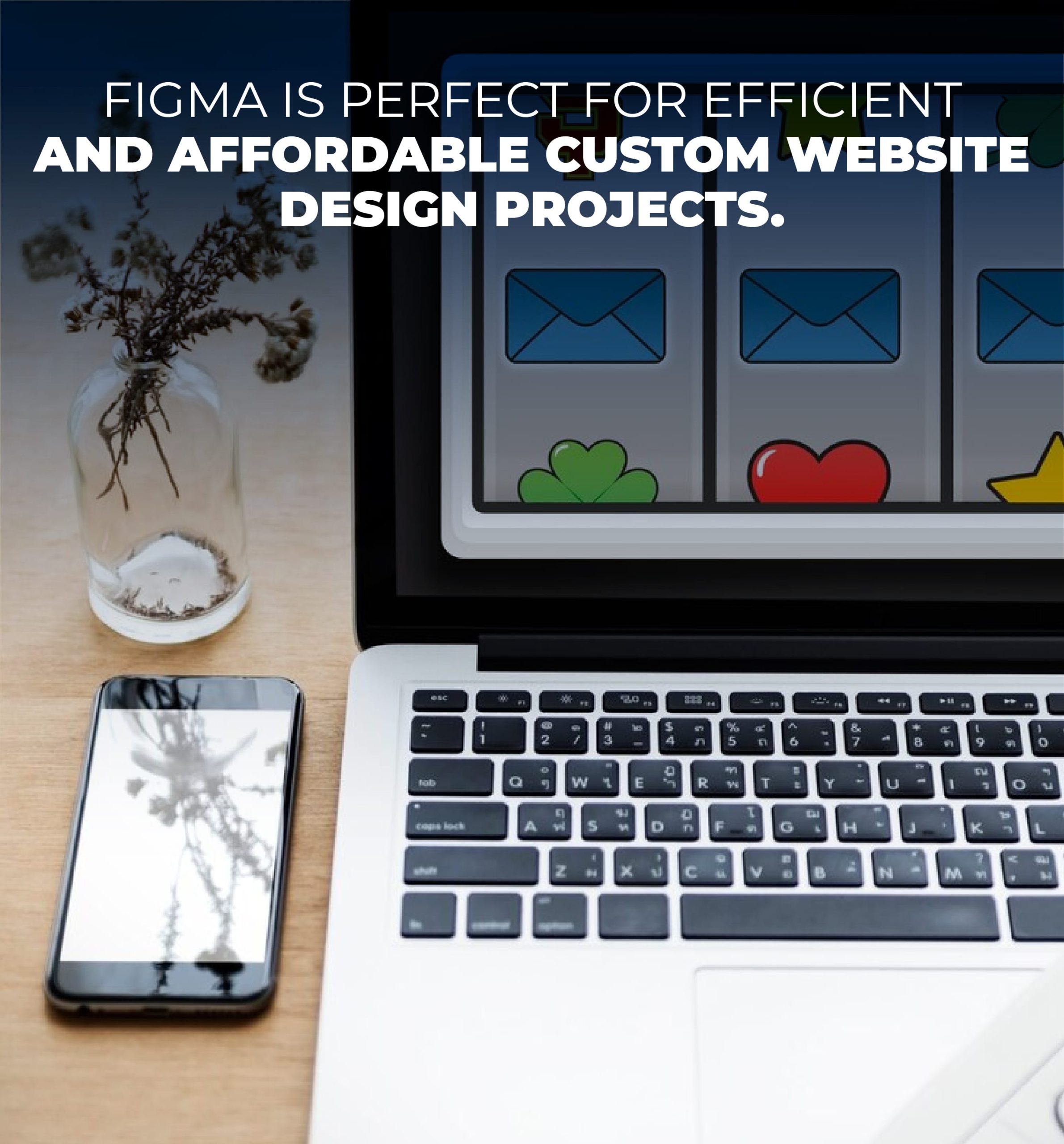
How To Use Figma to Design a Website? – Let’s Get into the Details!
Figma, a leading SaaS UI design software, revolutionizes collaboration on visual projects by offering a cloud-based platform. Its accessibility from any device worldwide with an internet connection ensures seamless workflow. Figma is a flexible and powerful tool that can assist designers of all levels and backgrounds in creating great designs quickly and easily. Its collaboration capabilities and cloud-based platform enable different responsive website designers to work on similar projects in real time while making communicating with the team members easy.
Project owners can grant varying access levels to teammates, facilitating real-time design reviews, changes, and comments. The platform’s intuitive nature simplifies onboarding for new collaborators. Over recent years, Figma has swiftly overtaken Adobe XD and Sketch in the preferences of many designers. Let’s leverage Figma for website design with a workflow that DevriX’s UI designers crafted. Tested over time, this efficient and user-friendly approach underscores Figma’s website design and development prowess. Stay tuned for a comprehensive guide on maximizing Figma’s potential in crafting compelling digital experiences.
When using Figma for website design, its intuitive interface and user-friendly features, such as design components and support for grids and layouts, empower designers to craft responsive and consistently efficient designs. Figma’s plugin ecosystem further enhances its versatility by seamlessly integrating various design and development tools, ensuring a fluid design workflow. Leveraging Figma for the initial design phase and complementing it with a web builder during the construction and publishing stages creates a harmonious and efficient workflow for Figma website design projects. This approach maximizes the strengths of both tools, offering a comprehensive solution for the end-to-end process of creating and bringing a website to life.


Key Highlights
- Figma, a powerhouse for web designers, provides robust tools essential for the design and development of websites.
- In web design services, through Figma, you can streamline your design process by creating and managing design components, ensuring time efficiency and design consistency.
- Leverage Figma’s grid and layout features for crafting responsive designs that seamlessly adapt to various devices.
- Enhance collaboration within your team by seamlessly integrating Figma with other design and development tools.
- Elevate your website development services‘ effectiveness and web design productivity by capitalizing on Figma’s features like keyboard shortcuts, components, constraints, vector networks, and auto layout. Collectively, these elements contribute to heightened productivity and effectiveness in your web designs.
Managing & Creating Design Components
Design components serve as the building blocks of cohesive web designs, offering a convenient means to administer and refine elements across projects, ensuring efficiency and uniformity in your custom website design services.
- Beginning the creation of a component involves pinpointing the design element earmarked for reuse—be it a button, icon, or text box. Once the selection is made, a right-click on the element prompts the option to “Create Component.”
- After component creation, assign it a name reflective of its function, such as “Primary Button” or “Navigation Menu.” This paves the way for seamless integration, as the component becomes readily deployable across your project canvas through simple drag-and-drop actions, generating new instances effortlessly.
- Initiating modifications to a component is a straightforward process; double-clicking on the component opens an editing interface. The beauty of this lies in the instantaneous propagation of changes across all instances of the component within the project.
Moreover, the capability to craft nested components emerges, enabling the amalgamation of various components into a singular design entity. For instance, a web design professional might create a navigation menu component housing individual button components.
- Managing this component ecosystem becomes a breeze with Figma’s “Assets” panel. This panel serves as a control center, offering an encompassing view of all components within your project, streamlining the process of locating and updating them. This proves especially invaluable when dealing with expansive design endeavors involving numerous components necessitating consistent updates. Harnessing the power of design components not only economizes time but also fortifies uniformity across the expanse of your custom website design services.
Ready to Elevate Your Brand?
Create a powerful brand identity and
web design that reflects your aspirations.
Optimizing Responsive Web Designs Through Grids and Layouts
Achieving a seamless, responsive web design involves using the details of grids and layouts, and Figma streamlines this process by offering a versatile array of grid and layout options.
- Determine Canvas Size
Starting with creating responsive design demands selecting an appropriate canvas size aligned with the target device or screen dimensions—be it desktop, tablet, or mobile. Alternatively, you can craft a custom size tailored to your specific requirements.

- Select Grid Type
Following the canvas size, opt for a grid type matching your design vision, whether column grids, modular grids, or baseline grids. If you provide custom website development services, the good news is that custom grids are also at your disposal. Once the grid type is chosen, utilize the grid settings to refine parameters like size, spacing, and color, fostering precise alignment of design elements and ensuring a uniform layout.
- Frames in Figma
An indispensable tool for creating responsive web designs, frames act as containers for design elements, enabling the creation of distinct layouts tailored to diverse devices or screen sizes. Frames can segment your design into separate sections or screens.
- The Figma Auto-layout
Any custom website development company should leverage Figma’s auto-layout feature, a game-changer in creating web page designs. This functionality facilitates the generation of dynamic components that autonomously adjust their size and position based on content, streamlining the design process significantly.
- Screen Size Testing
In conclusion, thorough testing on various devices and screen sizes during the design phase is imperative to guarantee the intended look and functionality. Figma offers preview options for custom website development service providers, allowing you to assess your design across diverse devices and screen dimensions, simplifying the identification of potential issues and enabling prompt adjustments. With these tools and techniques, you can produce top-tier, responsive website designs optimized for any device or screen size.
Fuel Your Brand’s
Prosperity with
Captivating Logo Designs
Explore the full spectrum of innovative design. Our specialists
are dedicated to transforming your brand from a memorable
logo and an intuitive web design to professional
stationery, seamless e-commerce integration, and a
cutting-edge mobile application.
We Are Here To Help
Skyrocket Your
Business’s Meteoric
Rise with the Experts
Launch your company into the stratosphere! American Logo
Developers’ skilled staff is here to help propel your brand.
Take a chance and shoot
for the moon today.
Providing Industries with Innovative,
Tailored Solutions to Transform Success Across USA & Canada
- Arlington
- Cleveland
- Jacksonville
- Miami
- Orlando
- Atlanta
- Dallas
- Louisville
- Minneapolis
- Philadelphia
- Austin
- Denver
- Kansas City
- New York
- Portland
- Chicago
- Houston
- Los Angeles
- New Orleans
- San Diego
Enhancing Design Workflow – Figma Integration with Contemporary Design and Development Tools
Figma stands out as a cornerstone in fostering a seamless design workflow for any responsive website development company, promoting elevated collaboration among team members. The tool boasts a robust integration framework, enabling designers to work seamlessly with various design and development tools. Prominent connections include well-known project management platforms like Trello and Asana, prototyping tools like InVision and Marvel, and developer essentials like GitHub and Zeplin.
These integrations prove invaluable for sharing designs with team members and stakeholders, tracking design alterations and feedback, and ensuring accurate design implementation. Figma’s plugin ecosystem also allows designers offering responsive website development services to extend its functionality and integrate with even more tools, making it a versatile and powerful tool for any design workflow.

Exporting Designs in Various Formats
Figma simplifies the sharing process by offering easy and simple export options in multiple file formats, including PNG, SVG, and PDF. This feature is particularly useful when collaborating with team members who may not use Figma. Users can export entire designs or specific elements with customizable export settings to suit particular needs.
This functionality is equally beneficial for client presentations and collaboration with developers requiring reference design assets for responsive website development. Overall, Figma’s export functionality is a valuable feature that can help you streamline your workflow and collaborate more effectively with others.
Leveraging Plugins to Enhance Functionality
A standout feature within Figma is its plugin ecosystem, delivering many tools and functionalities to augment designers’ workflows and improve their responsive web design. Figma accommodates a diverse range of plugins, automating repetitive tasks, introducing new design features, and saving valuable time on projects.
When developing custom WordPress website designs, Plugins like Unsplash simplify integrating high-quality images into designs, eliminating the need for online searches. For designers emphasizing accessibility, the Stark plugin proves indispensable, providing tools to ensure designs align with accessibility standards. Another popular choice is the Content Reel plugin, which effectively facilitates the rapid generation of realistic content for their designs.
The dynamic Figma plugin ecosystem continually expands, introducing new tools regularly. This ongoing growth provides designers offering responsive website services with limitless opportunities to refine their design processes and elevate the quality of their creations.
Enabling Seamless Team Collaboration with Other Design Tools in Figma
Figma offers a unique advantage by facilitating collaboration among team members using diverse design tools, such as Sketch or Adobe XD. The platform’s robust import and export features simplify the sharing of designs across different tools, enabling a cohesive team workflow.
For instance, you can effortlessly import a Sketch file into Figma, allowing collaboration with Figma users or, conversely, export a Figma file as a Sketch file for those utilizing Sketch. This adaptability ensures a broader collaboration spectrum, allowing team members to contribute to projects using the tools they find most comfortable.
Use Figma’s API for Custom Integrations
Figma’s API empowers developers to craft custom integrations with various tools and services, enhancing flexibility and transforming it into a potent design tool. Leveraging the API enables task automation, seamless data sharing between tools, and the customization of workflows to align with specific requirements.
The Figma API opens up possibilities like creating bespoke plugins, synchronizing design data with tools such as project management software or version control systems, and seamlessly integrating Figma with internal tools and systems.
This flexibility offered by the Figma API proves instrumental in streamlining design workflows, enhancing collaboration with team members, and optimizing productivity by accomplishing more in less time.
Whether you’re a custom website development agency, a team of website development consultants, or an individual navigating website development costs, Figma’s adaptability ensures a tailored approach. It accommodates various needs, providing an affordable solution for website development services, aiding in custom website design and development, and extending support for those focused on custom WordPress website development and associated services.
In essence, Figma serves as a versatile hub, fostering collaboration and offering a customizable design environment that caters to the diverse needs of design professionals and development teams.




























